Gardening is one of the oldest hobbies, and with good reason. Not only is it a great way to spend your time, but it can also provide delicious food and beautiful flowers. One of the most popular plants for gardeners to grow is the Geranium. But if you’re new to gardening, one of the most common questions you might have is how to grow Geraniums in pots. They are typically pink, purple, or red and have long stem-like leaves. They are used as ornamental plants in gardens or as houseplants.
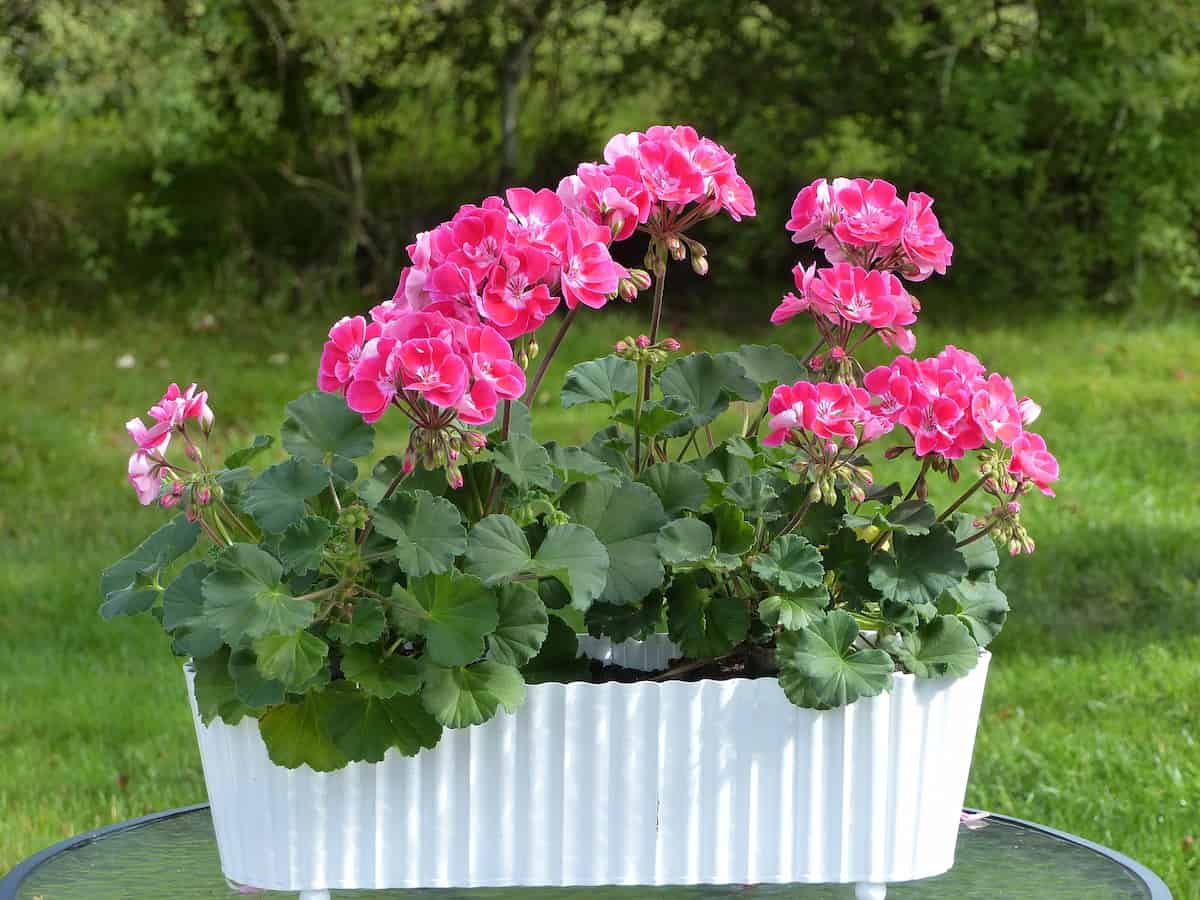
How to grow and care for geraniums in pots
Types of Geraniums
Zonal Geraniums
Zonal Geraniums are one type of Geranium that can be grown in a pot. An advantage to growing zonal Geraniums is that they require little care once they’re planted in a pot. They’re also relatively easy to transplant if you want to move them somewhere new. One disadvantage to growing zonal Geraniums is that they don’t do well when it’s cold outside, so make sure to place them in a spot with sunlight exposure during the winter months.
Ivy leaf Geraniums
This type of Geranium is best known for its ivy-like leaves and fragrant flowers. It grows best in partial sun or light shade and moist but well-drained soil. Many Geraniums can be grown in pots, but the ivy leaf Geranium is perhaps the most popular. They make a beautiful addition to any garden and can thrive in various climates.
In case you missed it: How to Grow and Care for Ocotillo in Pots: A Beginners Guide
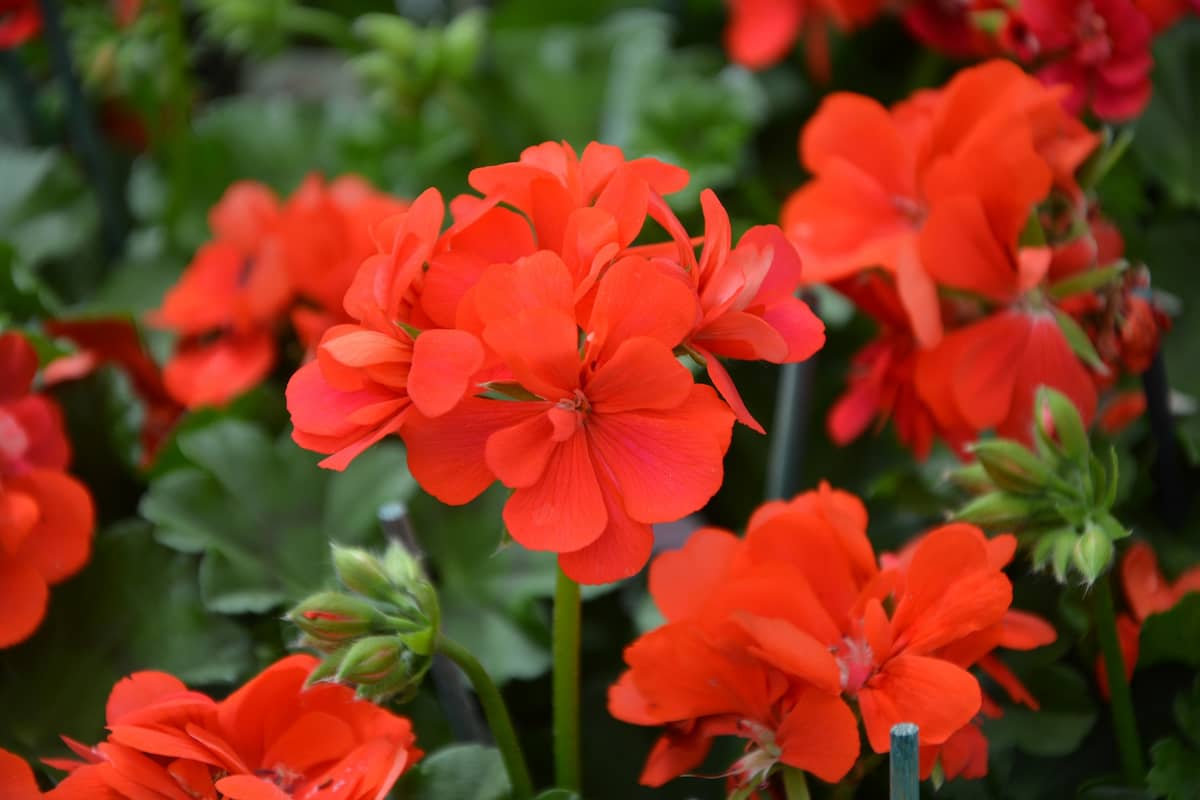
Regal Geraniums
Many Geraniums can be grown in pots, but the regal Geranium is one of the best. This type of Geranium can grow up to six feet tall and has bright pink or purple flowers. The regal Geranium is a hardy plant that can survive in most climates, making it a great choice for gardeners in cold weather areas.They are perfect for adding color and personality to any garden.
Sun requirement for growing Geraniums
Geraniums might be the perfect choice if you are looking for a low-maintenance plant that can add cheerful color to your garden. To grow Geraniums successfully in pots, you will need at least six hours of direct sunlight per day. If your location doesn’t receive this level of sun, you can supplement the sun exposure by using artificial lighting.
Most gardeners believe a temperature range of 10-23°C is best for growing Geraniums in pots. To ensure that your Geraniums receive the correct amount of sunlight and warmth, it is important to rotate your plants regularly and give them lots of water. They are relatively easy to grow and require very little care once they have established themselves in your garden.
In case you missed it: How to Grow and Care for Bloodroot Plant: A Beginners Guide
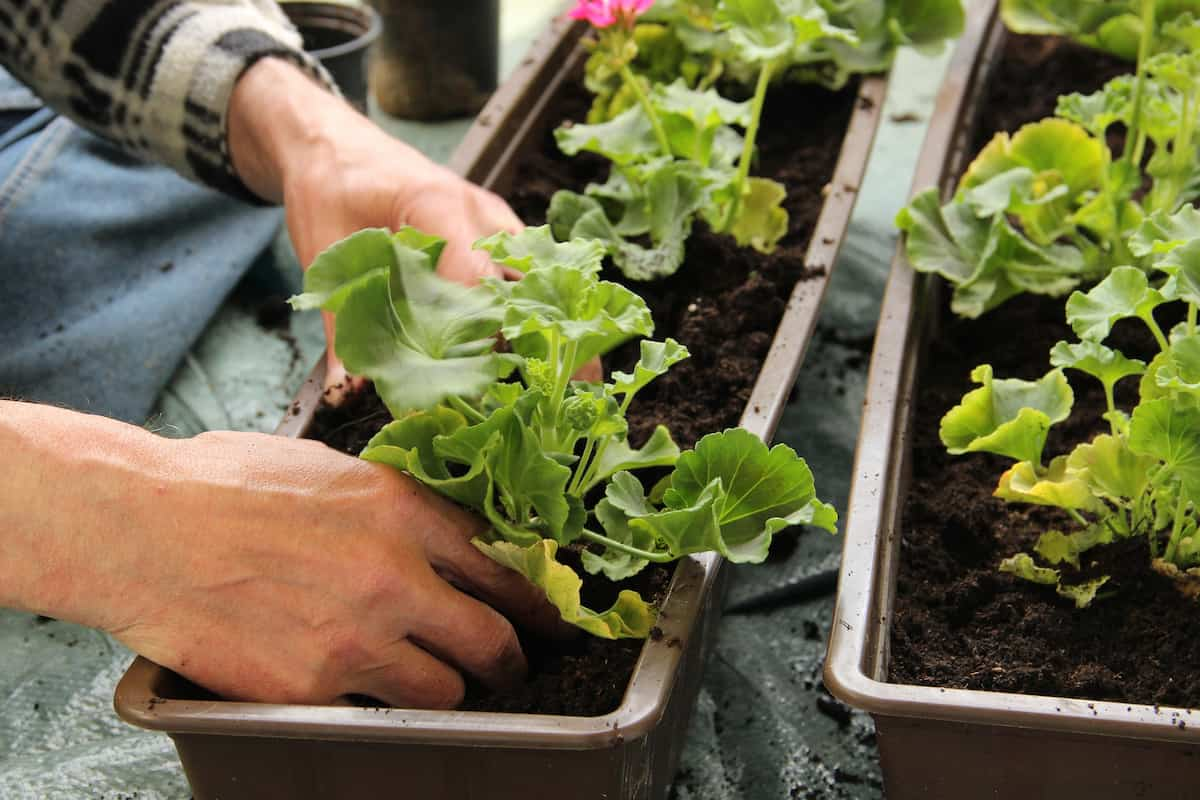
Soil requirement for growing Geraniums
To grow Geraniums in pots, you will need a soil mix of loam, sand, and clay. You should add some organic matter to the soil, such as compost. Finally, you should water your plants deeply and often during their growing season. When planting Geraniums in containers, it is important to find a soil mixture that will provide the plants with the necessary nutrients and moisture.
Be sure to add plenty of organic matter, such as dead leaves and straw, to the soil mix to help improve drainage. Many soil types are suitable for growing Geraniums, but some of the best include loam, well-drained clay, and light sand. Make sure to adjust the pH level of your soil according to the instructions with your potting mix and add a moderate amount of organic matter (e.g., manure and compost).
Water requirement for growing Geraniums
Watering your Geraniums is essential for their health. Water them at least once a week, but more often if the soil feels dry. Pour enough water into the pot to cover the roots, then wait several minutes before watering again. Watering Geraniums in pots is not difficult, but it is important to be consistent with how much water you give them. You should water them deeply enough so that the soil feels moist but not wet.
Avoid letting the soil get too dry, as this can kill the Geraniums. Growing Geraniums in pots is a great option if you want to grow these beauties but don’t have a lot of space. Aside from the obvious benefits of having fresh flowers in your home, growing Geraniums in pots also helps regulate soil temperature and moisture, which can help prevent problems like root rot.
Pot size required for growing Geraniums
When choosing the right pot for growing Geraniums, there are a few factors to consider. First, ensure the pot is large enough to accommodate the root system and full-grown plants. Second, choose a pot with good drainage and sturdy material like ceramic or plastic. And finally, be sure to plant the Geraniums in well-drained soil enriched with compost or manure. If you’re new to Geranium gardening, start small by planting two or three seedlings in each pot.
You can move them up into larger pots as they grow without fear of transplanting shock. When growing Geraniums in a pot, choosing the correct size and shape for your plant is important. The pot should be at least 24 inches in diameter and 12 inches deep. If possible, try to find a large container that can be placed outdoors in summer or brought inside during winter. When choosing potting soil, choose one with a high organic matter content since Geraniums thrive in soil rich in nutrients.
In case you missed it: How to Grow and Care for Bleeding Heart Plant: A Beginners Guide
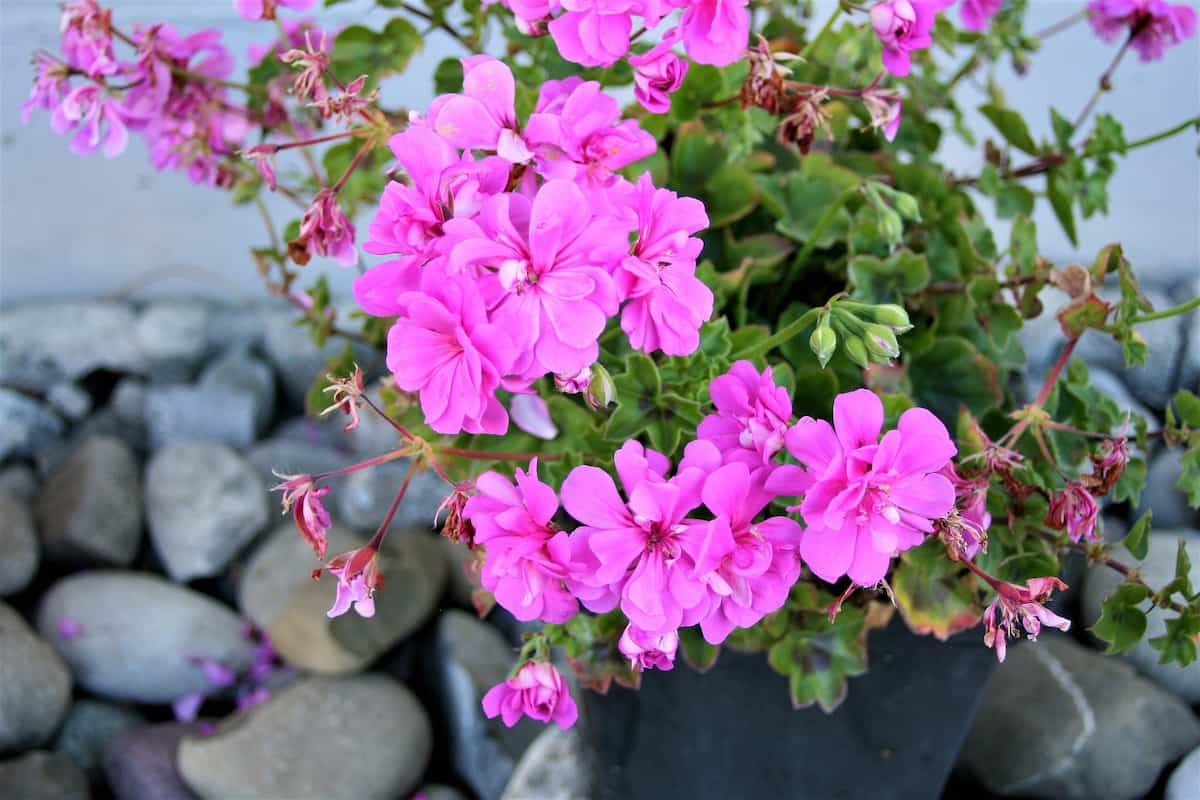
Propagating Geraniums
From cuttings
Geraniums are a great addition to any garden and can be propagated easily from cuttings. Start by removing the lower leaves from the Geranium stem, then cut the stem about 1 inch below the first leaves. Make several cuts perpendicular to each other, taking care not to damage the stem further.
Strip off any damaged or dead stem parts, leaving a clean edge. Insert a piece of rooting hormone into each end of the cut stems and place it in a container with moist soil. Keep the soil moist, and keep the lights on for about four weeks. After four weeks, remove the rooted stems and plant them in fresh soil in your garden.
From seed
Geraniums can be propagated from seed but generally require a warm climate successfully. To propagate by seed, collect the seeds from ripe flowers and store them in an airtight container in a cool, dark place. Geranium seeds should be sown in a cold frame or greenhouse in early spring when the soil is still cold and damp. If growing outside, Geraniums may be sown directly into the ground after all danger of frost has passed. Be sure to water regularly while Geraniums grow, especially during the first year.
Transplanting Geranium seedlings
Geraniums are a great option if you’re looking for a beautiful, easy-to-grow perennial to add to your garden. They need minimal care and can be transplanted from seedlings into your garden easily. Remove the spent flowers and broken limbs from the Geranium plants. Cut off the roots of the plants that are at least 2 inches long and 1 inch in diameter. Place the plants in small pots or containers filled with fresh potting soil and water them well. Mist them occasionally with water from a spray bottle during dry spells.
Geranium plant care
Fertilizer requirement for growing Geraniums
You can use a high-nitrogen fertilizer during the early stages of growth and switch to a balanced or organic fertilizer once the plants have reached full size. Monthly applications of liquid fertilizer are also recommended. Many different types of fertilizer can be used to grow Geraniums in pots. The type of fertilizer you use will depend on the amount of nitrogen, potassium, and other nutrients your plants require.
Add a trace element such as iron or sulfur for increased energy and blooms. Follow the label instructions carefully to ensure you provide the correct nutrients for your specific plant variety and climate. To grow Geraniums in pots, you will need potting soil that is moderately fertile and has good drainage. Over-fertilizing can cause plants to become leggy or spindly.
In case you missed it: How to Grow and Care for Cyclamen Indoors: A Beginners Guide

Repotting Geranium plants
Geraniums need repotting every two to three years, depending on the care and growing conditions they are given. Repotting is important because it helps distribute root growth evenly throughout the pot and helps improve drainage. When repotting your Geranium, make sure to use a fresh potting soil mix that has been moistened before adding it to the plant. Geraniums can also be grown in containers, but they require more frequent repotting as they do not usually do well in dry or compact soils.
First, ensure the plant is healthy and well-hydrated to repot Geranium. Gently loosen the soil around the roots with your fingers until you can easily remove it. Then use a garden fork or trowel to divide the root ball into two or smaller ones. Make sure each division has at least three or four healthy roots. Use a potting mix that’s half sand and half loam, and fill the pot one-third of the way full with fresh soil. Fill the roots with additional soil, packing it down firmly. Water thoroughly and replant in a sunny location.
Pruning Geranium plants
When it comes to growing Geraniums in pots, pruning is a key part of the process. Pruning helps keep your plants healthy and manageable while providing them with the necessary growth space to thrive. First and foremost, when it comes to pruning plants in pots, always use a sharp knife when cutting back plants. Not only will this help ensure that your cuts are precise and clean, but it will also prevent any damage from occurring to the plant’s delicate roots.
When removing branches growing too close together or crossing over one another, cut just below a joint rather than cutting through the branch. When trimming off stems or branches, remember to consider where the plant’s roots are located – if they’re buried deep beneath soil level, leave those stems intact; if they’re closer to the surface, snip them off close to the soil line.
Geraniums care in winter
Geraniums are hardy plants that can handle cold winters. However, they do need some care in winter to stay healthy. Water the Geraniums well when it is cold outside. Keep the soil moist, and fertilize them only if they show signs of need, such as yellowing leaves or weakening plants. In a cold climate, you may want to move your Geraniums into a greenhouse or sheltered area during the winter.
In case you missed it: How to Grow and Care for Hydrangeas: A Beginners Guide to Planting to Harvesting
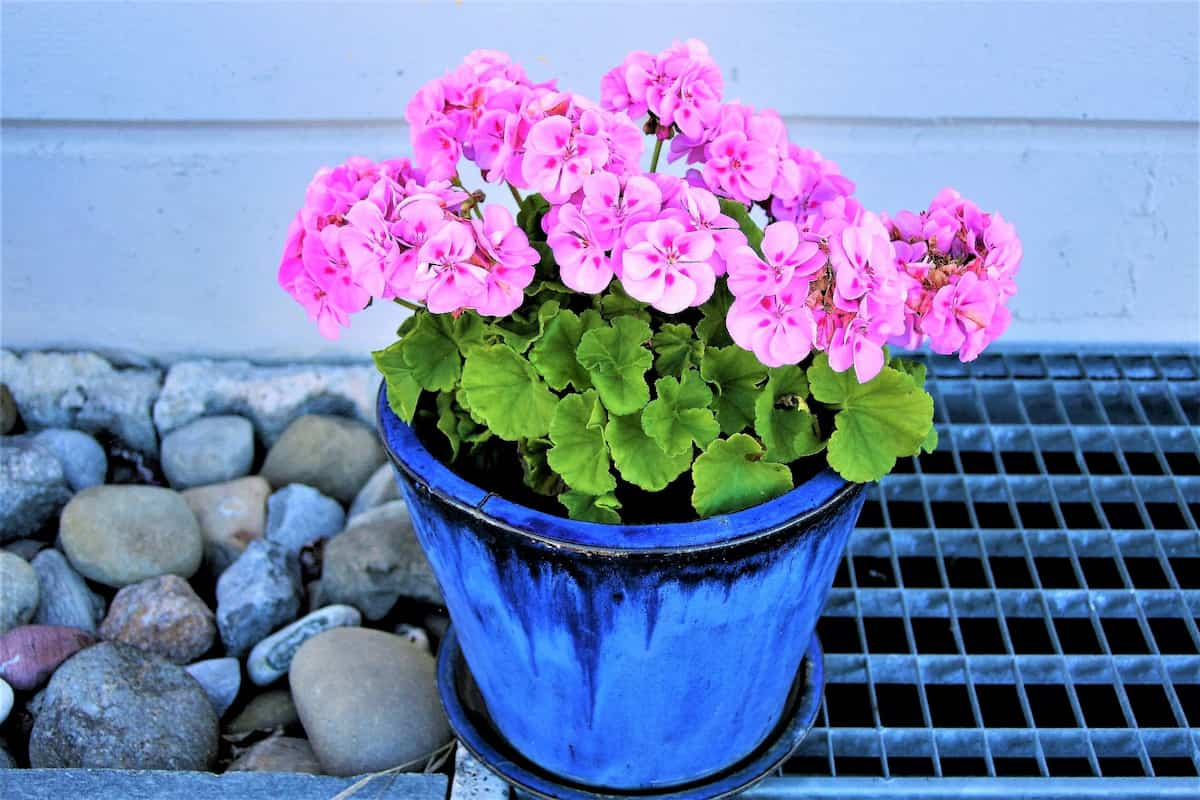
Pests and diseases of Geraniums and their control
There are a few pests of Geraniums that you may encounter. One is the Colorado potato beetle, which can cause damage to the foliage and flowers. You can control this pest by using natural pesticides or hand-picking them off as they feed. Another pest is the spider mite, which feeds on the leaves and causes yellowing and wilting of the plants. Spider mites are difficult to control, but you can treat them with pesticides or horticultural oil. Many diseases can affect Geraniums, but with a little care and knowledge, these plants can be healthy and thrive.
Fungal leaf scorch occurs when fungal spores attack a leaf, causing it to turn brown and die. The best way to prevent fungal leaf scorch is to ensure your plants have plenty of sunlight and moisture-rich soil. Fungal leaf scorch can also be treated with fungicide spray or solution. Anthracnose is a fungal disease that affects both foliage and flowers. The fungus spreads through contact with water droplets or direct contact with infected plant material. To prevent anthracnose, keep your plants dry during rain or irrigation periods, avoid overhead watering, and use a fungicide when needed.
Conclusion
When it comes to gardening, many different types of plants can be grown. Some plants are better suited for growing indoors, while others require a sunny outdoor setting. One type of plant that falls into the indoor category is Geranium. This article gives the basics of growing Geraniums, from planting them to caring for them during their lifespan. Following these simple tips, you can enjoy beautiful blooms on your plants in no time.
- How to Grow Tomatoes Organically at Home: A Comprehensive Guide
- Organic Gardening on a Budget: Low-Cost Methods and Materials
- Gongura Seed Germination and Planting Methods
- Cabbage Seed Germination and Selection
- Broccoli Seed Germination and Selection
- Asparagus Seed Germination and Variety Selection
- Seasonal Flower Gardening: Best Practices for Spring, Summer, Fall, and Winter
- How to Grow Hibiscus from Flower
- Plantation Ideas for Home Decoration: A Beginners Guide
- Flower Garden Designs and Layouts for Beginners
- Planting and Spacing Techniques in Papaya: A Beginner’s Guide
- Growing Gold: Essential Techniques for Planting Pineapples
- How to Make Kalanchoe Plant Bushy: Home Remedies and Solutions
- 11 Reasons Why Your Gardenia is Not Blooming: Home Remedies and Solutions
- Eco Elegance: The Guide to Designing a Drought-Tolerant Landscape
- Gardening on a Slope: Strategies for Hillside Landscaping
- Nourish and Flourish: Top Organic Mulches for Thriving House Plants
- Everything You Want to Know about Indian Mogra Flower: Discover Uses and Growing
- Green Thumb Success: Expert Tips for Cultivating Greenhouse Pumpkins All Year Round
- Maximize Growth & Flavor: The Ultimate Guide to Companion Planting in Herb Gardens
- How to Control Rhododendron Problems Naturally: Home Remedies and Organic Ways to Fix Them
- Natural Magic: The Remarkable Benefits of Cinnamon for Plants
- Best Steps to Revive Dying Tulip with Natural and Organic Treatment
- 10 Reasons Why Your Angel Trumpet is Not Blooming: Remedies and Treatment
- How to Fix Periwinkle Leaf and Flower-Related Problems: Natural Remedies and Solutions
- How to Fix Zinnias Leaf and Flower Problems: Discover Natural and Home Remedies
- Organic Steps to Induce Lemon Tree Flowers: A Comprehensive Guide
- Bloom Booster: Crafting the Perfect Homemade Bougainvillea Fertilizer
- Optimizing Growth: A Guide to Applying NPK Fertilizer for Potted Plants
- 10 Best Homemade Fertilizers for Rubber Plant: DIY Recipes and Application Method
- How to Boost Female Pumpkin Flowers: Effective Steps for More Flowers and High Yields
- Transform Your Indoor Garden: Top Benefits of Pink Salt for Houseplants
- 10 Best Homemade Fertilizers for Peacock Plants (Calathea): Easy DIY Guide
- Unlock Blooms: 9 Reasons Why Your Potted Chrysanthemum is Not Blooming
- 8 Reasons Why Your Potted Hibiscus is Not Blooming: Fix it with Simple Solutions
- Unlock Blooms: 9 Key Reasons Your Potted Frangipani Won’t Flower